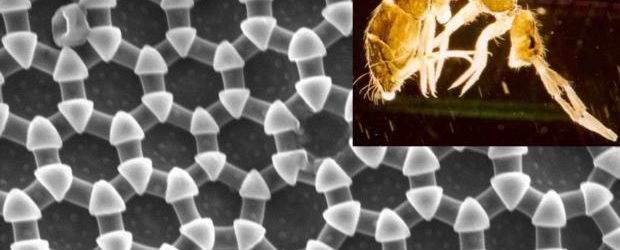
KAUST, Saudi Arabia – 30 July, 2017
A group of scientists at King Abdullah University of Science and Technology (KAUST) have developed an environmentally friendly omni-phobic (liquid repellent) material, it was learnt today. This novel material is inspired by soil-dwelling insects – springtails which are omnivorous, free-living organisms that prefer moist conditions.
Working under the leadership of Himanshu Mishra at KAUST’s Water Desalination and Reuse Centre, these new materials can be used in a range of applications such as reducing biofouling and underwater drag to membrane distillation, oil-water separation, and waterproofing.
Himanshu Mishra is the Assistant Professor at KAUST in the Environmental Science and Engineering and Biological and Environmental Science and Engineering Divisions with an interest in this particular discipline. Generally, the process of developing liquid repellent veneers relies heavily on the use of per-fluorinated coatings; even though this solution works, it is generally short-lived and is likely to corrode under harsh physical conditions. It also has adverse effects on environment as well as health. To counter this issue, Himanshu Mishra and his colleagues came up with a viable alternative by studying the surface coatings of springtails.
Using inspirations from naturally occurring materials, substances, and phenomena to create artificial materials and designs, generally known as biomimicry, is a highly popular mechanism to induce greater creativity in the scientific process and has been widely used in other instances such as conversing energy and improving communications and transportation.
In this particular instance, the scientists studied the surface properties of springtails. The patterns on the springtails exploit surface textures that contain a double layer of reentrant cavities, which keep them dry. By using photolithography and dry-etching tools at the KAUST Nanofabrication Core Lab, the researchers recreated these double layered reentrant micro cavities on silica surfaces. These micro cavities can trap air and prevent penetration of liquids, even under elevated pressures. The surface of the springtails also prevents any loss of omniphobicity in the presence of localized damage or defects or upon immersion in wetting liquids.
The team of scientists stated that the potential of this material is yet to be fully realized as it can be used to reduce hydrodynamic drag which is the force acting opposite to the relative motion of any object moving with respect to a surrounding fluid and anti-fouling which refers to specialized category of coatings applied as the outer surfaces of materials to slow the growth of subaquatic organisms.
References:
http://www.alphagalileo.org/ViewItem.aspx?ItemId=177740&CultureCode=en